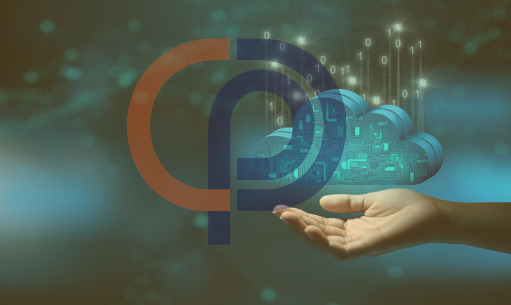Over the past few years, the world of technology and security has seen a massive shift. With more businesses hosting remote employees than ever, cloud computing and storage has gone from “nice-to-have-” to “must-have”. With the increased number of businesses migrating to the cloud, the need for tough cloud network security is more critical than ever.
We know you have questions, and we have the answers on all things cloud networking security related.
Let’s start from the beginning.
What is Cloud Network Security?
Cloud network security, as an essential subset of cybersecurity, involves the implementation of measures to strengthen data, applications, and infrastructure security within cloud environments. This dynamic and evolving area seeks to address the unique challenges posed by cloud computing, where traditional security models may not be enough. The goal is to create a resilient defense mechanism that protects against unauthorized access, data breaches, and potential disruptions to cloud-based operations.

What is meant by Cloud Security?
Think of cloud security as the digital bodyguard for the stuff you keep on the internet. When you use the cloud to store pictures, documents, or use online services, cloud security is a set of protective measures to keep your information safe from cyber bad guys. It’s all about making sure that only you and the people you authorize can access your important stuff, and that nobody sneaky can get in to mess things up or take your data. Think of cloud security like a virtual lock and key system to keep your digital things safe and sound in the cloud.
What are 3 Categories of Cloud Security?
In the context of cloud security, various categories work together to ensure the protection of your digital assets. While a comprehensive understanding encompasses aspects like network security, application security, and compliance, in this blog we will focus on three key categories in this discussion: data security, Identity and Access Management (IAM), and infrastructure security. These categories play a pivotal role in creating a robust defense against potential cyber threats, safeguarding your information in the ever-expanding cloud environment.
Data Security
Data security in the cloud is a multifaceted endeavor, encompassing strategies to ensure the confidentiality, integrity, and availability of data. Encryption plays an important role in rendering data indecipherable to unauthorized entities, both during transit and while at rest within the cloud infrastructure. Access controls, strong authentication mechanisms, and data loss prevention (DLP) measures contribute to the overall data security framework.
Identity and Access Management (IAM)
Identity and Access Management is a cornerstone of cloud security, focusing on managing and controlling access to cloud resources. In the digital world, user identities are the heart of security, and effective IAM ensures that only authorized users can interact with sensitive data and applications. Multi-factor authentication, role-based access controls, and continuous monitoring are integral components of IAM strategies.
Infrastructure Security
Infrastructure security involves safeguarding the foundational components of cloud services. This includes networks, servers, storage, and other critical elements that form the backbone of cloud computing. Firewalls, intrusion detection systems, and regular security audits are paramount in mitigating risks associated with potential vulnerabilities in the underlying infrastructure.

What are the Main Things to Consider in Network Security Solutions in the Cloud?
In the cloud environment, where traditional network perimeters are often blurred, several key considerations emerge in the realm of network security.
Robust Firewalls
Implementing robust firewalls is foundational to cloud network security solutions. These serve as the initial barrier against external threats, monitoring and controlling incoming and outgoing network traffic based on predefined security rules. Cloud-based firewalls can dynamically adapt to the fluid nature of cloud environments, ensuring real-time protection.
Intrusion Detection and Prevention Systems (IDPS)
The proactive identification and mitigation of potential threats are crucial in the cloud. IDPS tools analyze network and system activities to detect and respond to malicious behavior. By leveraging anomaly detection and signature-based detection, these systems contribute to a proactive defense mechanism, preventing potential security breaches before they can escalate.
Virtual Private Networks (VPNs)
Securing data transmission over the internet is a paramount concern in cloud environments. VPNs play a crucial role in encrypting data, ensuring a secure connection between users and the cloud. This not only protects data in transit but also establishes a secure communication channel that is resistant to eavesdropping and other forms of cyber threats.

Is Cloud Security Different from Computer Networking Security?
While both cloud security and computer networking security share common objectives of protecting data and systems, they differ in scope and approach. Network security traditionally focuses on safeguarding the communication pathways and access points within an organization’s local network. This involves measures such as firewalls, intrusion detection systems, and secure access controls.
On the other hand, cloud security is a broader concept that encompasses the protection of data, applications, and infrastructure hosted in cloud environments. The dynamic and shared nature of cloud computing introduces unique challenges, including data residing in multiple locations, shared responsibility models with cloud service providers, and the need for scalable security solutions.
In essence, cloud security is an extension of network security tailored to the cloud environment. It necessitates a holistic approach that considers the intricacies of cloud architecture, data distribution, and the collaborative responsibility between the organization and its cloud service providers.
What are the challenges of Cloud Security?
Business owners often have concerns about moving to the cloud, especially when it comes to data and security. We’ve put together a list of common challenges we see with cloud securities and what they mean for you and your business.
Dynamic Nature of Cloud Environments
Cloud environments are inherently dynamic, with resources being provisioned and de-provisioned dynamically. This dynamism poses challenges in maintaining consistent security measures across rapidly changing infrastructures. Having an IT partner to manage your cloud environment can help keep everything consistent no matter what updates and changes happen in the cloud itself.
Shared Responsibility Models
The collaborative nature of cloud computing introduces shared responsibility models, wherein both the organization and the cloud service provider have specific security responsibilities. Understanding and delineating these responsibilities is crucial for a comprehensive security posture.
Compliance and Regulatory Considerations
Organizations must navigate a landscape of diverse regulatory frameworks when operating in the cloud. Ensuring compliance with industry-specific and global data protection regulations is a multifaceted task that requires continuous attention and adaptation.
Integration with Existing Infrastructure
Many organizations embark on cloud adoption with existing on-premises infrastructure. Integrating cloud security measures seamlessly with legacy systems poses a challenge that necessitates careful planning and execution.

What are Best Practices for Cloud Network Security?
In the dynamic and evolving realm of cloud network security, adherence to best practices is fundamental. Let’s discuss some key considerations.
Regular Security Audits and Assessments
Conducting periodic security audits helps identify and rectify vulnerabilities within the cloud infrastructure. Regular assessments contribute to a proactive security stance, ensuring that the organization stays ahead of emerging threats.
Employee Training and Awareness
Human factors remain a significant element in cybersecurity. Providing comprehensive training on security best practices and fostering a culture of security awareness among employees can significantly reduce the risk of human error leading to security incidents.
Incident Response Planning
Developing a robust incident response plan is crucial for mitigating the impact of security incidents. This plan should outline clear procedures for identifying, containing, eradicating, recovering from, and analyzing security breaches.
Collaboration with Cloud Service Providers (CSPs)
Cloud service providers play a pivotal role in the overall security posture of cloud environments. Establishing clear lines of communication and collaboration with CSPs ensures a shared responsibility model, wherein both parties actively contribute to maintaining a secure cloud infrastructure.

Choosing the Right IT Partner for Your Business
Choosing the right Managed IT Service Provider is more than just a business decision; it’s about aligning with a partner who truly understands and shares your values. Professional Computer Concepts (PCC), a leader in cybersecurity services in the Greater Bay Area, exemplifies this ideal partnership. Whether you operate in manufacturing, law, construction, or any other industry, PCC delivers custom cybersecurity solutions that are as unique as your business. By working with us, you’re not just fortifying your cloud network security; you’re empowering your business to thrive. Our commitment to excellence ensures that your digital assets are well-protected, allowing you to harness the full power of cloud computing with confidence. Ready to elevate your business’s IT infrastructure?


